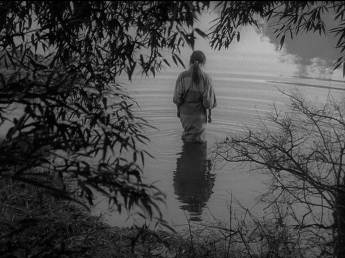For its first two reels or so, Michelangelo Antonioni’s first and only American film, Zabriskie Point, fits squarely with the style of other contemporaneous youth chic ‘vignettes from the revolution’ productions like Godard’s Sympathy for the Devil, Makavejev’s W.R.: Mysteries of the Organism, and, for that matter, the Monkees’ Head. Which means that it starts with a procession of Maoist or black power sketches that flow endlessly and somewhat uncomfortably into one another. Some black revolutionaries question whether white suburbanites would ever really risk his life to kill a pig. One pasty student vows that he will do just do. But he’s lost amidst a sea of protests and billboard jokes.
Zabriskie Point was produced during the anarchic period when the American studio system— realizing that its idea of great youth picture, Doctor Doolittle, had become utterly irrelevant in the marketplace—opened the floodgates to anti-Establishment pictures and begged for its life. So here we have Antonioni under the imprimatur of MGM—a picture divided against itself, the product of an entertainment conglomerate that tells us that zombies in grey flannel suits run your father’s Corporate America. It’s a film by and about a ruling class eager to destroy itself for one last buck.
This changes when the film slows down and moves out to the desert. Mark, the cop killer from the first scene, has stolen a private plane and, like all horny revolutionaries, uses his propeller to flirt with Daria, an alienated chick driving alone on the desert road. He buzzes over her car, swoons down towards it, nearly collides with it, only to pull back up at the last minute. She eventually flags him down. They talk, wander, and eventually make love. These sections are the film’s most accomplished—a startling union of exact cutting and ‘Scope composition that ascends to a kind of beatific plane.
Critics spat upon Zabriskie Point upon its first release in 1970, pointing to incoherence, pretentious dialogue, absurd pretexts for desert orgies and the like. But over thirty years later, it’s clearly a great, precise film of its time. The last reel elevates the whole piece to one of the saddest films I know. Daria stands on the side of the road, listening to a radio report about Mark’s death. She stands with her back to the camera, crying. It’s here that the relation between Zabriskie Point and Antonioni’s earlier output becomes clear. In that moment, when she realizes the bleak fate of her privileged life after one sullied and extinguished spark, she is no different from the bored aristocrats that populate L’Avventura. She has come as close as she ever will to radical excitement, knowing that she could never die for a cause as casually as her boyfriend. Daria, deflowered flower child of privilege, knows that she will never do anything so exciting for the rest of her life.
In short, Zabriskie Point becomes, like Easy Rider, a bleak vision of a generation’s demise. The fatalism is understated and subtle but much more affecting.

1 comment:
Its a very old movie and on the recommendation of my uncle I just watched it out. It was really good one as I like cinematography of this movie very much. I was just spell bound.
Post a Comment